The table above shows the bulk progress I’ve made over the past 2 months. The most important upper body muscle gain can be seen in my chest measurement which increased by almost 4 inches.
And here are my current pictures (taken in different lightings so you can get a “real” perspective):
End of 2 Month Bulk (December 2014)
The changes in measurements imply that I gained a tremendous amount of muscle mass on my upper chest, upper back and lats – all while gaining less than an inch around my waist and hips.
The fat gains on my waist and hips are so small that I can shred them within a week or two once I start cutting, but the upper body muscle gains are the best I’ve made in my entire training career.
All my shirts are tighter around the shoulders, arms and chest while my waist remains tight. I recently rewarded myself with my first gym stringer and had to buy it in their largest size (XL), since my chest has grown all the way to almost 47″.
In this article I will explain how I trained and ate to achieve those upper body muscle gains.
Let’s get started!!
My Diet: 4,500 Calories A Day
A few days ago I decided to track my eating for the first time in years. I put every single food into excel with nothing left out.
One day of eating during my bulk:
Macros:
- Protein: 235 g > 21% of total caloric intake
- Carbs: 416 g > 36% of total caloric intake
- Fat: 217 g > 43% of total caloric intake
To my surprise the overall caloric intake came out at over 4,500. This may sound very high, but keep in mind I’m a tall guy at over 200 pounds and I trained my ass off 6 days a week for 2 hours a day with 30-60 seconds of rest between each set.
The damage I did to my body during my workouts required that I ate as much as I did, otherwise I wouldn’t have eaten that much. I only ate when I was hungry, ate slowly and ate solid foods most of the time.
I believe that eating a diet that was high in fat and carbs was key to grow during my bulk.
Why is protein so “high”?
Now, some of you may wonder why I ate 235 g of protein when I previously stated that 70-120 g is enough.
First, protein made up just 21% of my total caloric intake. When you eat an enormous amount of calories, it’s natural that more of them are going to come from protein. Even foods like white rice contain protein!
Second, the recommended intake of 70-120 g is a general recommendation that works well for MOST people. It worked well for me during the 3 years leading up to today. However, once you make the switch from doing a “regular” 1-1.5 hour workout 4 times a week to training for 2-3 hours 6 days a week a higher protein intake may be necessary. Also, when you increase your lean mass, your protein requirements increase. I had my body tested recently and my lean mass came out at the top of the range for athletes my height, thus making my protein requirements higher.
Why do you eat toffifee?
Another thing you may question is my consumption of toffifee chocolate.
Consuming dairy is a bad habit that I’m still struggling with. I’m lactose intolerant, but I love chocolate and I found that as long as I keep my dairy intake small and close to my workouts, my body digests it somewhat decently. Even though I try to do my best with my training and eating, I’m not perfect, so I decided to include this in my excel sheet to show you that you don’t have to do everything perfectly to make bulking progress.
Furthermore, I found that consuming sugar before my workouts enables me to train MUCH harder during my initial 1-2 hours of training. I’ve consumed a sugary snack of about 100-150 g before most of my workouts in the past 2 months and the effect has been amazing.
Meal Structure
This is usually how my day looks in terms of eating:
- 09 AM: Pancake with calorie free strawberry syrup
- 1 PM: Pancake with calorie free strawberry syrup
- 5 PM: Meat and rice with ketchup
- 6 PM: Toffifee or other quick snack
- 6.30 PM-9 PM: Workout
- 9 PM: PWO Shake (100 g maltodextrin, 30 g egg protein powder, 5 g creatine)
- 10 PM: Meat and rice with ketchup
- Midnight: Natural peanut butter
- 2 AM: Sleep
Disclaimer: I Didn’t Eat Like This Everyday!
The diet above was what I would eat on most days of the week, however some days I’m extremely hungry after my workouts and I don’t have food prepared at home so I will order a hamburger or pizza. This happens 3-4 nights a week after my workouts.
When I do that, I will skip my dinner and midnight meal, thereby giving myself a 2,000 calorie buffer to eat junk. This changes my macros, but overall caloric intake is much more for muscle building, therefore it doesn’t affect the big picture much.
Unfortunately, I know that eating junk is not good for you. In my future bulks I will schedule more time for my meal preparation to avoid this filthy habit of eating junk.
I’m telling you this to give you 100% REAL insights on how I eat during a bulk.
Most of you have busy lives with school, career, families and other responsibilities than training. There will often be times where you lack the time to cook or the money to go to a restaurant and eat a healthy meal. In that case, you have too what it takes to get your calories in to sustain bulk progress.
As long as you do the right thing most of the time, you will get results.
Don’t chase perfectionism or you will be in for constant disappointment and over the long term that is far worse than enjoying that burger a few nights a week.
Now, let’s move onto the training.
My 6 Day Training Split: Working Out Until I’m “Done”
- Monday: Arms, Shoulders, Calves, Traps, Abs
- Tuesday: Back, Chest
- Wednesday: Legs, Calves, Traps, Abs
- Thursday: Back, Shoulders
- Friday: Arms, Calves, Traps, Abs
- Saturday: Chest, Calves, Traps, Abs
- Sunday: Relax
This is the basic lay out of my workout and each workout takes 2-3 hours including stretching and warm up which I have gotten serious about this year.
The frequent traps and abs training was mostly out of experimentation. I wanted to see how I would look with bigger abs and traps.
The conclusion was that my traps grew rapidly and got too big for my liking so I stopped training them now.
In contrast, my ab training helped me maintain somewhat good-looking abs even though I got my bodyweight over 200 pounds. Keep in mind though that I kept my ab training to just 2-4 sets each workout so they don’t get too bulky.
This ab pic was taken a few weeks ago on a rest day after eating Chinese food and the desert pictured below:
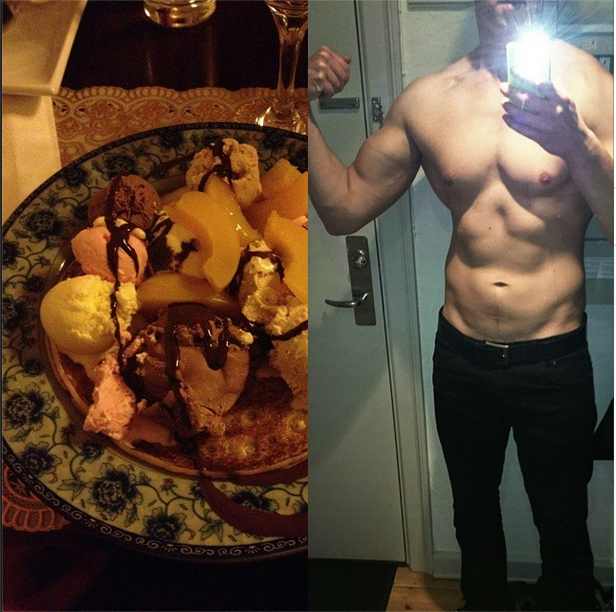
Finally, calves have always been a weak point of mine. I’m a tall guy with long limbs and I never had any calf muscle. To fix that, I performed 16-32 dropsets for calves at the end of most of my training sessions.
The hard work paid off and I can see my calf muscles for the first time in my life. They’re still small but everyone has to start somewhere!
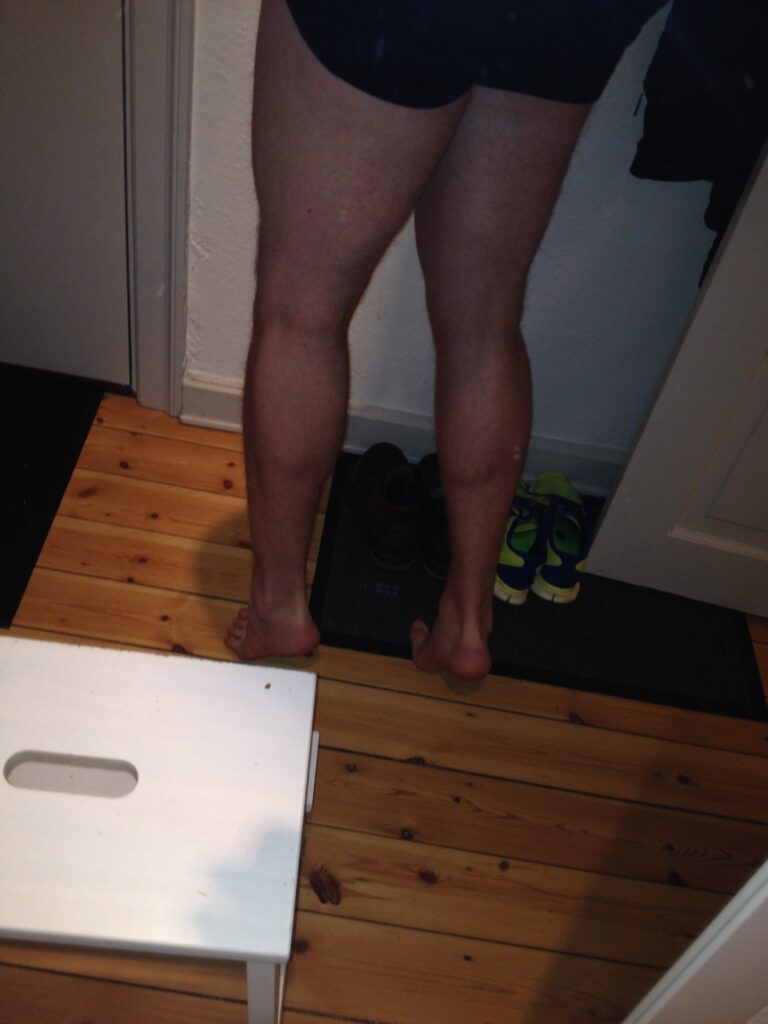
Training Principles
As mentioned in my previous articles, my training is based on the training principles of the legendary bodybuilder Serge Nubret.
To keep it brief, I train with moderate-high reps, light-moderate weights, bodyweight exercises, do a lot of dropsets and keep the rest between sets to less than 1 minute.
Instinctive Training
My training is instinctive. The layout you see above is just a guideline to how my training CAN look in any given week.
Most often, it changes depending on how my body feels.
If I did shoulders monday, and feel shoulder discomfort during chest training on Tuesdays I may skip chest training or do a light training session for chest.
Also, some workouts I feel I can go forever with certain muscle groups like rear shoulder. I have previously done over 20 dropsets for rear shoulder alone.
Other days, I start feeling sore and weak after just a few sets. On those days, I take it easy and focus on other muscle groups that are fresh.
By training instinctively, I’m able to maximise each workout since I can do a lot of damage to the muscle groups I feel are fresh on that given day.
Exercise Selection
The key to train hard and often is to find a set of exercises for each muscle group that work well for YOU and your goals.
To be specific, you want to do exercises that do not cause pain or discomfort.
For example, I found that skullcrushers cause elbow pain FOR ME. If I trained skullcrushers on a regular basis with high volume and high intensity, there’s a very high chance I would have messed up elbows by now.
In contrast, doing rope push downs for triceps works very well. I can do these all day without any pain. This enables me to do a lot of sets, reps and go beyond failure several times in a workout without risking injury.
To find the right exercises, you have to go through a lot of experimentation. In this article, you can find a list of my favorite exercises. Those are the exercises I do all the time, but you have to do your own experimentation because my exercises do not necessarily work for YOU.
With that out of the way, let’s get to the specifics of the two muscle groups that grew the most during my bulk: my back and chest.
Upper Chest Routine For Striations and Massive Gains
My chest routine looks something like this:
- Muscle ups: 2-3 explosive sets to warm up my upper body
- Seated hammer strength machine incline press: 4 sets with light weights and 8-12 reps (30-60 seconds rest between sets)
- Low cable crossovers: 8-16 dropsets of 8-12 reps each with 30-60 seconds rest between each dropset (after my last dropset I do diamond push ups to failure, followed by regular push ups to failure) > This is the “money” movement in my chest training. It’s by far the best chest exercise for me.
- Incline DB pullovers: 4 sets with 1 minute rest between sets (I aim for 12 reps on the pullovers and max out the diamonds)
- If I have more energy, I will do a few sets of diamond push ups to failure
That’s how my chest routine looks give or take a few sets or switching up the order of exercises depending on what’s available at the gym.
All the exercises above emphasise your upper and inner chest.
The reasoning is that even though I want to get bigger, I want to get bigger in the right places.
1) Want A Great Chest? Stop Doing Flat Bench Presses!
I train to have a square looking chest with separation lines, striations and good proportions rather than mindlessly adding size everywhere. Here’s an example of the chest I’m aiming to achieve:
(Pictured: Lazar Novovic of Bar Brothers)
To achieve that square chest look, you want to do chest exercises that emphasise your upper and inner chest. Just imagine if Lazar didn’t have massive upper and inner chest development – there wouldn’t be any striations in the middle of the chest and there wouldn’t be separation lines between the upper and lower chest.
In my opinion, those striations and lines make a chest look great. Given the choice, I would always prefer to have a smaller chest with those lines instead of a big bulky powerlifting chest:
(Pictured: Konstantins Konstantinovs – One of the best raw powerlifters ever).
I have huge respect for the powerlifter above, but I just don’t go for that look!
So, why am I showing you a picture of a powerlifter? Because powerlifters base their training around the flat bench press which is the most popular chest exercise.
I did this too back in the day when my chest training revolved around flat bench presses. Back then, I had a fairly developed chest, but it didn’t look good.
My chest simply got bigger, but there were no separation lines, no striations and no proportion to it. In fact, I would argue that my chest got WORSE when I trained it with flat bench presses.
Therefore, if your goal is to build a chest that looks closer to that of Lazar rather than that of Konstantins, you want to quit the flat benches and emphasise your upper chest and/or inner chest with every exercise.
Here’s a story of SFT-reader, Zarrar who has gynecomastia (puffy nipples) and used to be bullied about his chest:
And here’s his comment about 1.5 months after intense focus on his upper chest development:
And here’s SFT-reader Frank who followed my advice of replacing flat benches with incline:
If the advice works for guys with gynecomastia (including me, I still have the condition), imagine what it can do for those of you without that terrible gland in your chest!
2) You cannot isolate the upper chest but you can emphasise it
A lot of guys believe that isolating the upper chest completely removes work from your lower chest.
Often this belief leads them to asking me whether they should train their lower chest.
The short answer is NO and now I’ll explain why.
When you train your chest, you cannot ISOLATE a certain part of the chest. You can only EMPHASISE parts.
The pectoralis major muscle is ONE muscle with muscle fibers spread around a large surface.
When you do a typical upper chest exercise like the incline bench press, you stimulate a larger proportion of muscle fibers placed in the upper part of the pectoralis major compared to when you do a lower chest exercise like the flat bench press.
In other words, when you train your upper chest, you still train your lower chest.
For most guys, this is more than enough lower chest training.
With that said, you want to keep in mind that when you do certain shoulder exercises, you also hit the chest!
To be specific, I do a lot of military presses and handstand push ups for shoulders.
When you do these two exercises, you put an immense stress on your UPPER CHEST.
I didn’t know about this until very late in my training. Take a look at my transformation video below. Go to 2:40, put it in 720p and fullscreen. Watch how much my upper chest vibrates during the pressing:
Back Routine To Build The Wings Of A Cobra
 Adding size to your back and wings will add size to your chest circumference measurement. In my case, much of my 4 inch gain around my chest can be attributed to working my back hard.
Adding size to your back and wings will add size to your chest circumference measurement. In my case, much of my 4 inch gain around my chest can be attributed to working my back hard.
When I train back, I divide it in 2 parts since the back is a huge muscle group:
- Width
- Thickness
When you train for width, you want to target the muscles under your armpits that gives you wings – also called lats.
To target those muscles, you do VERTICAL pulling movements such as:
- Pull ups/Chin ups
- Lat pull downs
- Pullovers
When you want to train for thickness, you want to target the muscles on your upper, middle and lower back.
To target those muscles, you can use rowing movements and the deadlift.
In my case, I go for width. I want to have a very wide upper body and narrow waist. Thickness is also nice, but it’s a low priority.
Therefore, I most often do width training first and this is followed by rowing exercises at the end of the workout.
1) Training For Back Width
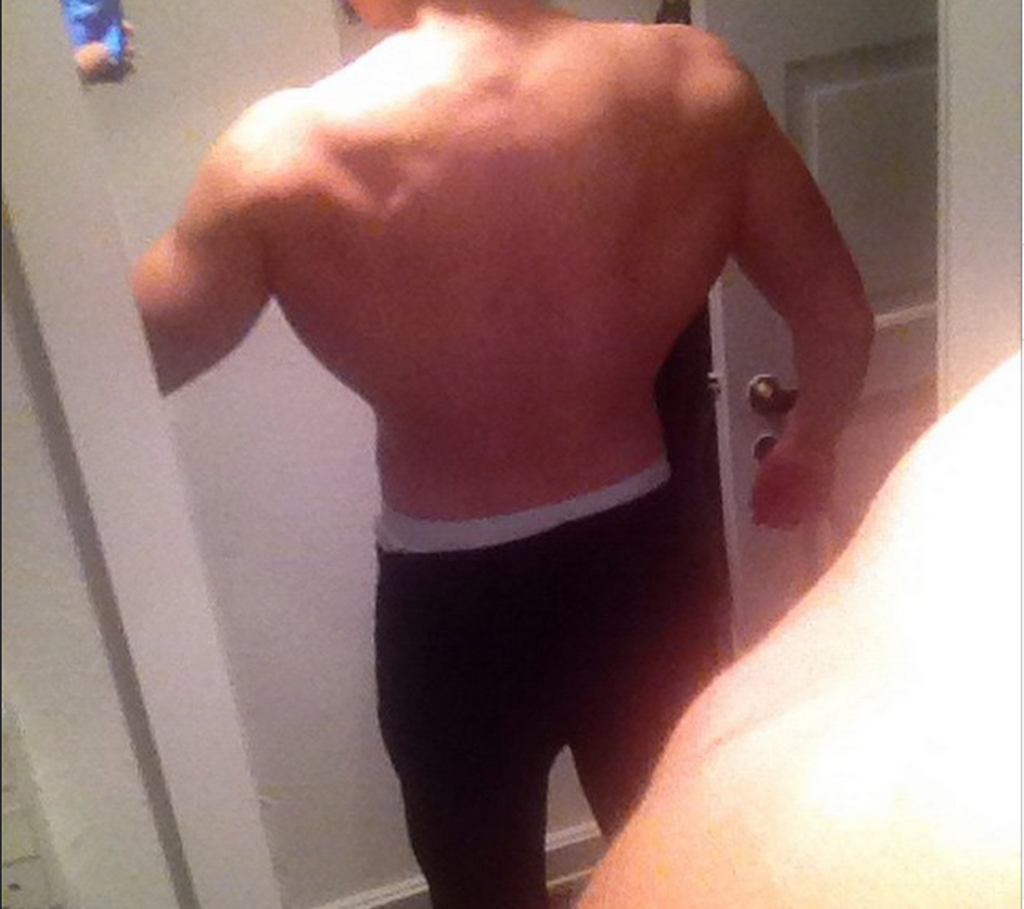
(Follow on Instagram @OskarFaarkrog for daily pics)
One day, I saw a guy doing standing cable pullovers for his back on the lat pulldown machine.
Since I was on the lat pulldown next to him, I decided to give it a try, and I got the best pump in my lats I have ever gotten.
I kept doing it for something like 30 minutes and pretty much fell in love with this exercise.
It’s currently my favorite back exercise to build wide lats, and ever since I started doing it my back has grown even further.
When I do this exercise, I use very light weights and an overhand grip that is slightly wider than shoulder width.
I go for 12-20 reps on my first set to get a great pump. Once I feel I cannot do any more reps with perfect form I sit down and do regular underhand grip lat pull downs with moderate weights, aiming for about 8-12 reps.
I dropset the lat pulldown 2-3 times depending on feel, and once I’m done I immediately go back to the cable pullovers and keep repeating this until the burn is so bad I can’t stand it anymore.
I like to call this a giant set:
- 12-20 reps standing cable pullover with very light weights (I used like 40 pounds).
- 8-12 reps seated underhand grip lat pulldowns with 130lbs. (stop this set 1 rep before failure).
- 8-12 reps seated underhand grip lat pulldowns with 100lbs. (stop this set 1 rep before failure).
- 8-12 reps seated underhand grip lat pulldowns with 70 lbs. (stop this set 1 rep before failure).
I keep repeating step 1-4 without any rest for a total of 3-5 giant sets.
Once I finish that, I keep doing 4-5 regular sets of standing cable pullovers with 30 seconds rest between sets until I cannot complete a single rep with good form.
The key to do so many sets and reps without a break is to leave the ego at home by using light weights and build up the amount of sets and reps you do gradually.
Also, if needed I will lower the weights so I can get my reps in. I don’t care if I’m using the lowest weight on the stack as long as I get my reps in and a great pump.
Some of my sets take several minutes to complete and the burn is so intense I’m thinking I may faint at anytime during the set and I have once puked outside when doing an intense calisthenics giant set.
2) Training For Back Thickness
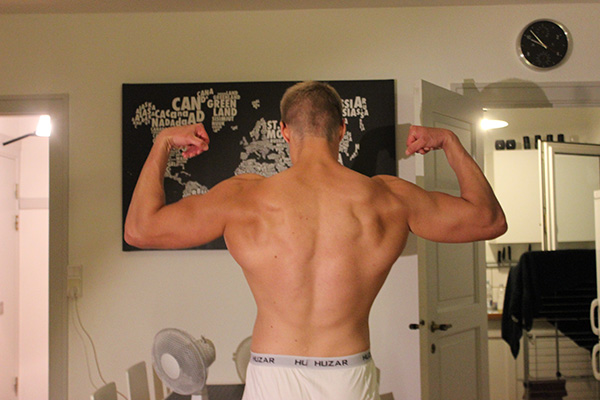
For back thickness, I do 8-10 sets with light-moderate weights on different rowing machines.
I aim for 8-12 reps on each set, take 30-60 seconds rest between sets and focus on working my muscles rather than my ego.
A good tip for back thickness is to always imagine pulling your elbows towards your upper body when rowing. (Credit for this tip goes to Elliot Hulse)
Once I finish my back thickness training, I will do a few sets of slow wide grip pull ups to finish off my back.
Summary of Back Routine
- 3-5 giant sets: Standing cable pullovers followed by 3 dropsets of seated underhand grip lat pull downs (no rest between giant sets)
- 8-10 sets x 8-12 reps of different rowing machines (30-60 seconds rest between sets)
- 2-3 sets of slow wide grip pull ups
Push Yourself But Know Your Limits
If you look at the amount of muscle groups I do each workout, it should be clear that my sessions are time consuming.
It’s difficult to hit several muscle groups in 45 minutes including warm up and stretching!
Doing this type of routine is a huge sacrifice from a time-perspective, but that’s what it takes to build muscle for me.
I’ve tried cutting my workouts short, and it never works.
Here’s an outline of the time I put into working out, recovery and cooking to make this work:
- Cook, eat, clean kitchen and “get ready” for gym: 2 hours
- Take bus to gym and change etc.: 1 hour (30 minutes each way)
- Warm up: 15 minutes
- Workout: 2 hours
- Stretching: 20 minutes
- Relax/shower/eat after gym: 2 hours
In other words, we are a looking at about half of my day dedicated to my training/eating/recovering.
That’s a huge sacrifice, and most people won’t make it. I know because I wouldn’t make it just a few years ago. My love for training grew gradually over time, and I don’t expect a beginner to put the same energy into working out as I do.
Start small, and build it up gradually, otherwise you set yourself up for failure.
Another point I want to make is in regards to overtraining. Most people would define my training as doing “too much” and “too often”.
First, I “cycle” my training. I will usually train hard for 3 weeks while being in a caloric surplus and then I will take a few “easier” weeks where I eat less to lose the excess fat I gain during my bulks and then spend another few weeks or months in maintenance just focusing on other things in life. This bulk was an exception since it has lasted over 2 months so far, and I can safely say that my next long bulk will not be until late next year.
Second, doing this much training does leave me tired with little energy for anything else. That’s one of the reasons to why I don’t publish articles for a month and then suddenly you have 2-3 in a row over a few weeks.
When I train hard, it’s my sole focus in life. School and the website are a low priority during my hard training cycles. The body and mind can only take a certain amount of stress. If you put too much stress on yourself you will burn out, get injured and “overtrain”. I don’t overtrain because I minimise outside stress and eat a lot of calories.
This is also the reason to why I only do “longer” bulks like this max 1-2 times a year. It’s hard to set other things in life aside to make room for a long bulking cycle, and it’s also unhealthy to constantly be in a huge caloric surplus since your body like to remain in homeostasis (energy balance).
Be proud but stay hungry!
– Oskar Faarkrog

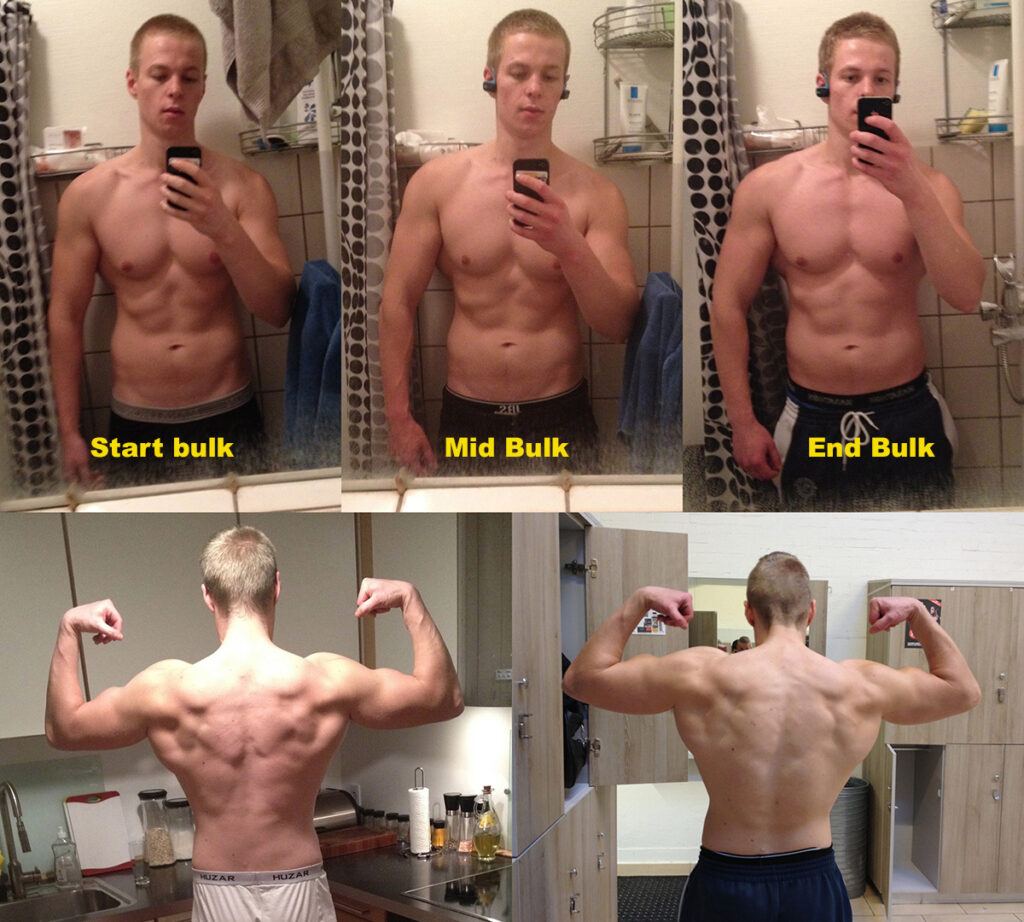
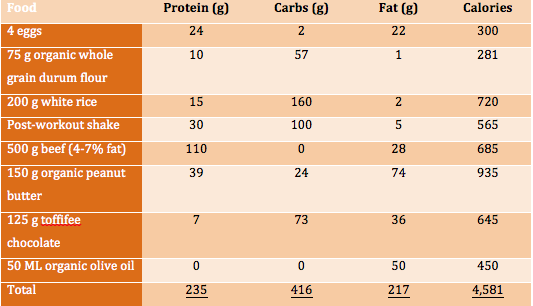
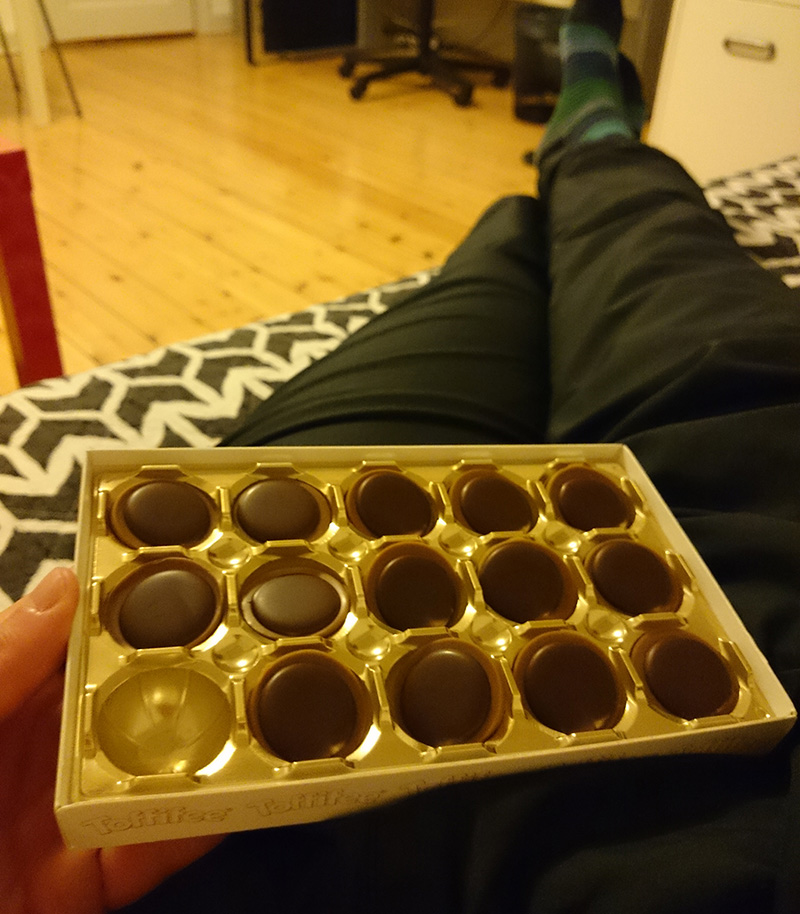

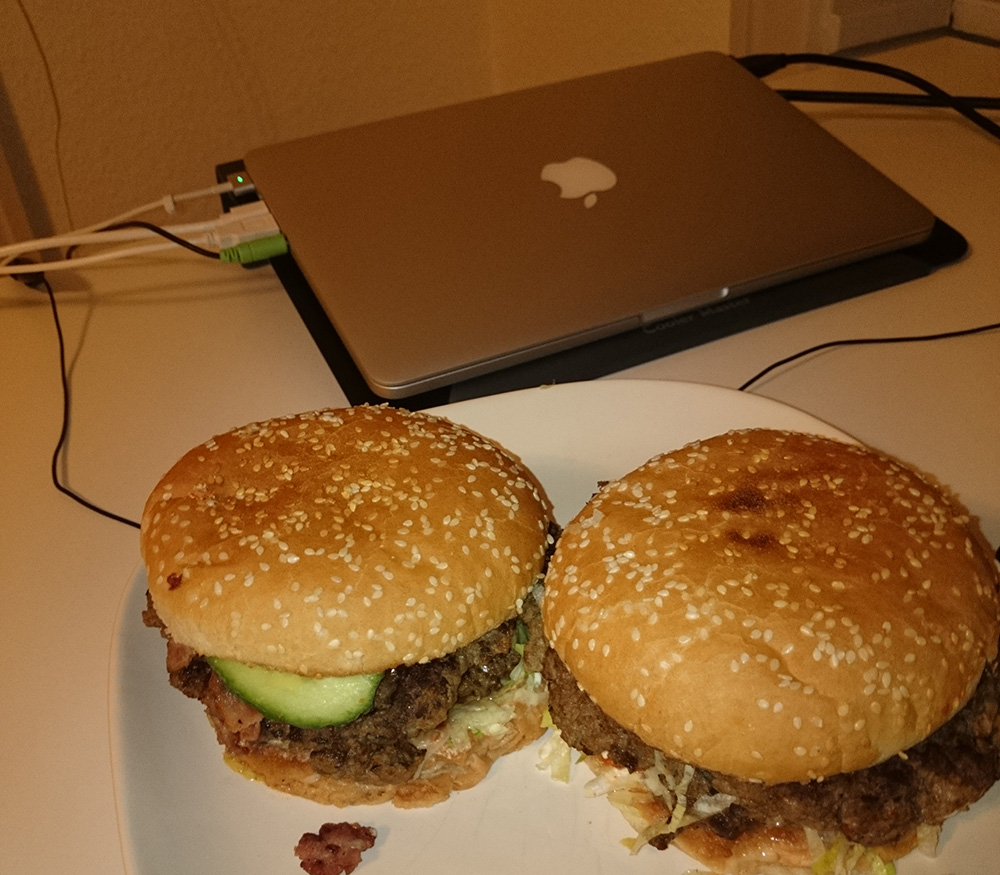
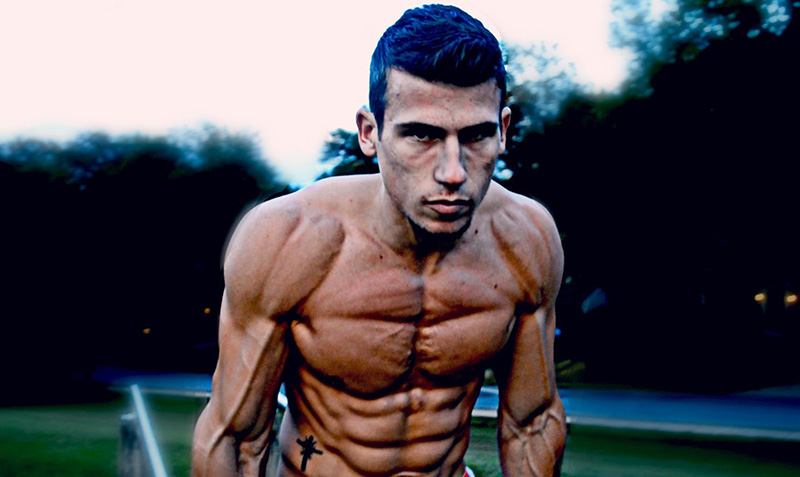
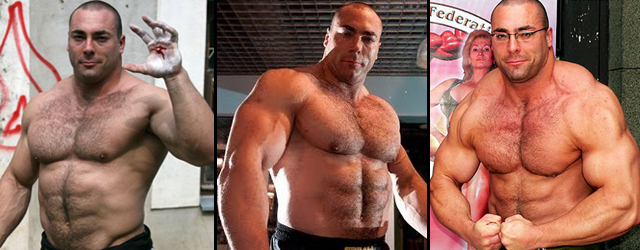
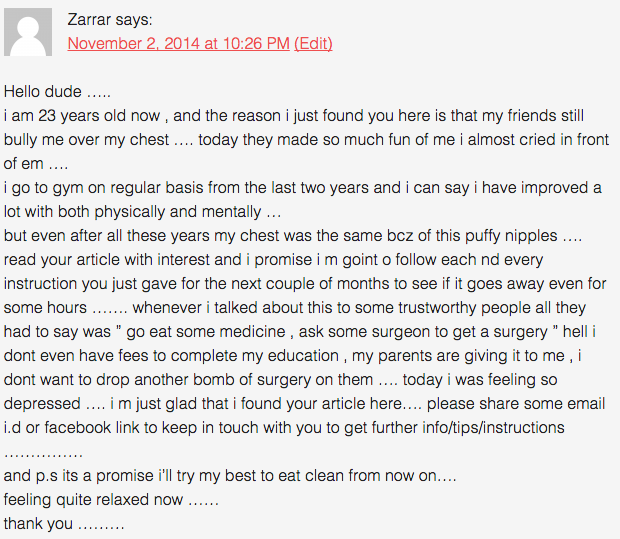
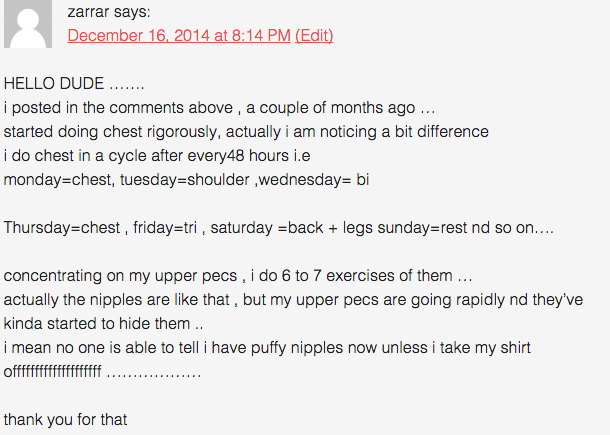

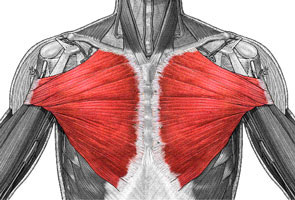
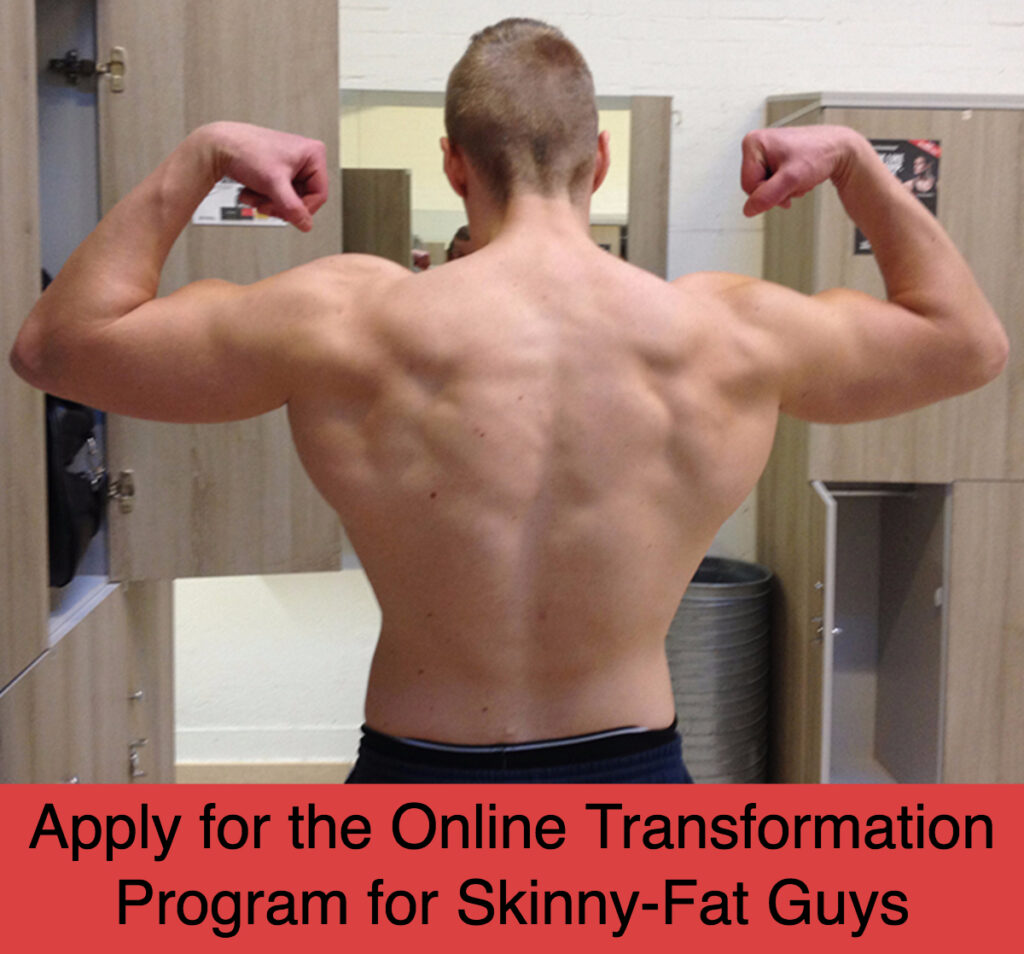
 Defining Aesthetics: What Exactly Is The Perfect Physique?
Defining Aesthetics: What Exactly Is The Perfect Physique?
Can i follow ur routine and i do a full body workout 6 times a week rather than do a split workout ?
Hope u can reply.
Hi Oskar,
A few questions:
1) What was your calorie in-take during maintenance/cut phase? I understand it is 4500 during bulk phase.
2) Did you eat 4500 even on your non-training days? If not, do you just eat your normal maintenance/cut calorie in-take during your non-workout days during your three week ‘bulk’ phase ?
3) In relation to Q1, was your macro-nutrient percentage split still roughly the same as your bulk partitions?
Thanks mate!
Sunny
Hi , how u doing that pancake ? classic ?
Hi Oskar,
can you tell me more about this calorie-free strawberry syrup (brand, composition)? Is it just artificial aroma/sweeteners and water? I like to eat my cottage cheese with a spoonfull or two of marmelade, but I can’t add marmelade every time because of the sugar.
Huge fan of your site btw, whenever my motivation reaches a low point, I look at your transformation pics or video. There’s a lot of amazing transformations out there, but rarely has someone looked so terrible before and so great afterwards (and you were already an adult, whereas many people transform between 15 and 18, when puberty growth and hormones make this a lot easier).
Hey Oskar, great site.
In this article you talk about sets and reps however in your previous one on how you train, you emphasize that you “Don’t count sets and reps, you achieve muscular failure”. I’m a bit confused and not sure how I should build my routine based off your information.
Thanks.
Hi Adam,
I train instinctively which means that I do as many sets and reps that I feel my body needs.
Hey oskar,
First of all let’s say that your results were amazing! Actually it would be logical to gain mooore fat by eating 4500 per day, by the way, what was your maintenance level back then? However you managed to gain little to no fat even if you ate so much which is truly amazing.
I think that one of the reasons that you were able to have such results was that you have built a foundation in your first year of stength training. You had already built the power and the only thing needed was to sculpt your body.
Thank you, I eat around 3500-3800 to maintain when I’m 200 lbs. When I wanna cut up, I’ll eat around 3000.
Your unsymmetrical abs tell abt ur genetics..[didnt i cmnted this earlier]
Jesus Christ that powerlifter is a straight up gorilla
True! He’s massive
Hi Oskar
Nice blog dude. I love reading about training & it’s interesting to see how different people get results. I would have a build similar to you & I have built up my back & traps with pull up’s & by doing hundreds of band pull aparts. Do you also use Fat Gripz in your training? I follow a more Powerlifting style program as I thought it’s easier to gage progress over time. If I get stronger I have progressed. I also just love deadlifting! I’m currently on a second cycle of the Candito Program http://www.canditotraininghq.com/free-strength-programs/
My only issue at the moment is squatting I can hit depth but I struggle with coming forward when weight gets heavy. Sorry for the long statement but my question to you is after outlining your training above you don’t Squat? If your goal is gaining leg size do you think squatting is essential? Have noticed increases in leg size but doing only leg presses & leg extensions?
Thank you Paddy
I don’t use fatgripz, but I do use thick bars during summers where I train calisthenics outside (we have a place with very thick bars so I do muscle ups on those).
I had the same struggle with squats. Do you have long femurs and a relatively short torso? This is often the case with tall lifters.
I don’t squat because of this exact issue. When you go come forward you take the stress of the legs and put it on the spine — do this for enough time and you have a recipe for a permanent hernia.
While squatting is good for some people, it’s a very overrated lift in the fitness community. The way I see it is that squatting and leg pressing are two very similar lifts. The only difference is that you have to use more weight on the leg press since you are not using your own bodyweight + a barbell, and you don’t have to balance anything, thus making it less intense on the core. If I remember correctly, Lou Ferrigno – a famous bodybuilder built his legs with machines (he was very tall too).
I personally haven’t gained much size in my legs after my first year of training where I did heavy squats three times a week. I haven’t gained much size, because I haven’t tried to do so. My legs respond fast to training, therefore I built all the size I needed back in 2010, and now I just train them once in a while when I feel they are getting smaller. (It takes me just 2-3 workouts to get my legs back to optimal size when they start getting smaller). One thing I have seen though is that leg extensions have given me more definition on my legs (lines on quads when I’m at a low body-fat).
Oskar,having any idea what was your chest size when you were leanest i think when u were 177lbs and in that usual chubby pic which u used in tranformation pic
Lean: Around 99 CM – now it’s like 119 CM
Chubby pic: Probably a bit less than in the lean pic since I didn’t carry much fat in my back/chest and I had less muscle mass. I would guess 95 CM.
Hey Oskar ! A great article as always , however i have a problem, when i made the transition to calisthenics i ended up with a very wide but paper-thin back, due to the fact that pull ups build wideness . how can i solve this with calisthenics? I have no intention to go back to the gym as i am extremely busy right now, Thanks
Hey Oskar,
This is great work! If there is one (small) suggestion I would make to your diet, it would be to replace some of your Olive Oil with a combination of Grass-fed organic butter, Coconut oil and/or MCT oil.
Reasons:
– Butter, MCT Oil, Coconut oil all contain short to medium chain triglycerides, Olive oil is a mono unsaturated oil which contains long chain triglycerides (requires enzymes to break down)
– The above are all fully saturated, and safe to use in high heat cooking. Olive oil is an unsaturated oil and when heating can go rancid and oxidise. It’s good on salads, not so good in a frying pan.
– Short/Medium Chain triglycerides can kill pathogens in your gut (including yeast, bad bacteria) while leaving good bacteria intact. This will help with your lactose intolerance and also can help reduce any bloating when loading with such high calories (esp sugars).
– MC triglycerides make up 60% of your brain matter and consuming these fats helps your brain cells regenerate and work at optimum efficiency
– MC triglycerides are also shown to boost metabolism and are easily convertible to energy.
Of all the above just coconut oil is perhaps the most beneficial. I know you know that, just I’ve been researching the topic recently and found out a lot of interesting info on Short / Medium Chain triglycerides.
BTW If you are lactose intolerant, try consuming probiotics such as lactobacillus (available in live yoghurt or tablet form). Many mild food intolerances have at their root cause an imbalance in gut flora so addressing this can help.
Finally, great work and keep it up!
Andrew
Hey Andrew,
Thank you for the compliment and detailed comment.
Coconut oil is great stuff and I used to use it early on in my bulk but then ran out of it and had some organic olive oil lying around so I finished that. Now I went to the store and got me some coconut oil again.
I’ll get lactobacillus soon and see how it works. Excited to try it since I love eating dairy. Thanks for the suggestion.
No probs!
I am personally not lactose intolerant but I do have other issues, and have read a lot about the link between so called ‘friendly bacteria’ and food allergies.
http://chriskresser.com/how-to-cure-lactose-intolerance
Please note there are 500 strains of friendly bacteria and not all help with digesting lactose. The article above suggests ‘bifidobacterium longum’. I would suggest reading up on the subject and interested to know your results!
Hey,oskar, whatsup..i wanna tell u i am researching a lot on body types.i think u r a mix of ecto endo.ecto bcoz ur wrists are just 6.5 inch and endo because your bone structure in chest and hips are very wide.at 12% bf ur waist at widest pt is 36inch.me at 12% bf is 29 inch.im pure ecto.what u think?
You sound like ecto, yes I’m a combination of ecto endo since I gain fat easily (endo) but I have skinny bones/hardgainer (ecto). My chest and rib cage was narrow when I started training.
You sure thats a 36 inch waist?!?!
No way in hell does that look 36???
Anyways great job on everything man, big inspiration!
Also, I can do 3 sets of 10 on wide pull ups, plus weighted chins for additional 45 pounds for 5 reps but im still fat? why?
36 inch waist around my widest point. Keep in mind that I’m 6’2 and I have built very wide lats and shoulders to make my waist look smaller.
Thank you!
Are you by any chance on the shorter side/light? If that’s the case, you may have great “stats” in bodyweight training, but not look as impressive as a taller/bigger guy simply because you have a shorter distance and a lighter bodyweight to pull up. Furthermore, being fat doesn’t have much to do with your strength but more to do with how you eat. If you want to lose fat you need to eat less food.
Sort of in the middle. 5’9 and weighing 166 pounds atm. But, if one is able to hit such numbers on bodyweight, shouldn’t the body be reflecting that? I guess yeah diet is also a factor
Hi Oskar, Im amazed about you transformation, i have to say thank you for tell your story on YouTube, and even more because is a true transformation, in youtube there’s a lot of fake bullshit about this. So the thing is, i wanna start my transformation but i dont know how much cardio or another thing i have to do first to go to the gym. Will you help me with that? Im a little scared i cant even do one push-up! Hahaha
So greetings from Venezuela (sorry if my english isn’t very well)
Keep going!
Nelson :)
Hey Nelson,
Thanks for the kind words!
Unfortunately, I can’t offer free personal training since I get a lot of inquiries about that, but I suggest you read all my articles, take notes and develop the best plan you can. This is how I got my experience so I’m sure you can do it too, just takes a lot of time. There will also be more videos soon, that may help.
hi oskar
when dieting down for summer – will you just go back to eating 2 meals per day?
and will you incorporate some cardio?
thanks
amy :)
Hey Amy,
This time I plan to track my calories to see how that works. I will most likely eat 4 meals a day this time since my caloric needs are higher and do cardio at the end of my cut for 2-3 weeks to get rid of that last fat.
Looking good! I noted that your waist didn’t get that much bigger even though you gained weight. When I am putting on LEAN muscle, I notice that my waist barely moves even though I put on size.
That’s a good training split, pretty similar to what I am doing. Any future competition plans? I might try one of those physique shows in 2015..
Thanks man, shoot me an email with your split and we can maybe exchange ideas?
I don’t plan on ever competing, I don’t like the idea of dieting down to unhealthy body fat levels so I can pose in trunks and get judged on my physique. However, I do plan on dieting down for spring/summer to look lean for the beach :)
Hey Oskar. I was thinking if I can combine lifting/bodyweight exercises and cardiovascular exercises and still gain some muscle. I know I will have to eat more and all this things. Can you give me your opinion?
I’m sure you can, but I don’t have much experience with it so can’t give you much advice on that.
oskar,i am struggling to loose water weight,actually the sodium deposit in my body. Can u help with some good tips.thnks in advance :)
Hey SAU, I have no idea about how to lose water weight. Never tried it.
Hey Sau, check my latest post on this: http://www.theofficialjohnandre.com/?p=346
I have “had?” the same problem….Try drinking a gallon or two a day for 4 days straight.
Hey oskaar, i really like your blog, you post new article all the time :D
Also i have a question
Soo A wide back means a wider shoulder?? :D
Thanks in advance
Thank you!
Yes, your shoulder circumference and shoulder width will increase when your lats get wider.
Okay thanks
More one question please.
When you have big lats, you cant put your arm strenght ? I mean parallele to your body
I have problems doing that now, so I don’t plan on building bigger lats but they just seem to keep growing when I touch a weight.
Training for 2 hours? I thought most fitness gurus said one shouldn’t do it. But I guess it can be done with proper nutrition (and no steroids and other supps)? Impressive, man.
I have a few questions:
How much faster are the gains (with proper nutrition, of course) when training for 2 hours? Can a person train for weeks for 2 hours 5-6 times/week, have visible results and get away with it(as in, not have adverse side effects)?
Also, what’s your opinion on:
– Taking zinc and/or magnesium for testosterone increase?
– Eating 1-4 raw eggs a day?
Also, Great stuff, the last few articles, you’ve been outdoing yourself!
I can only speak for myself: In my own experience, the more time and effort I put into fitness, the more I get out of it. This goes for both training, cooking and resting. This applies to anything in life, so why wouldn’t it apply to fitness?
Another point is on hormones. Take a look at the study in the bottom section of this article: https://skinnyfattransformation.com/how-to-naturally-raise-your-testosterone-levels/ (The Effects of Higher Testosterone Levels). This study shows hormone users can sit on their ass and do nothing yet gain almost twice the muscle mass that us naturals can. That’s why you gotta work harder as a natural.
“How much faster are the gains (with proper nutrition, of course) when training for 2 hours? Can a person train for weeks for 2 hours 5-6 times/week, have visible results and get away with it(as in, not have adverse side effects)?”
For me, this is the first real bulk where I’ve trained HARD 2-3 hours a day and eaten a lot on a consistent basis. To my surprise the gains have been way faster than ever before. People are commenting on how much I’ve grown, and my measurements have exploded in size, while I’ve barely gained any fat. Usually I keep my bulks to 2-3 weeks since I gain quite a lot of fat, but this time I’ve been able to go for over 2 months since the fat gains have been minimal. It feels like my body is just burning through the calories during my workouts. No matter how much I eat I’m always starving and get insane pumps in my muscles after eating high calorie meals. In your case, you want to build up to it slowly. I didn’t start off training like I do now. If I did, I would get injured. The same goes for eating. You increase calories gradually. Keep in mind I’ve trained for almost 5 years and bulked many times. The key is to start somewhere, and then always progress. Over time you will be able to train more and eat more.
I take ZMA everyday and it’s one of my favorite supplements. If you have deficiency in zinc/magnesium the supplement will work like magic to you. If you don’t, it most likely won’t do much. You can get your levels measured. Why eat them raw instead of cooking?
Thanks a lot, I really appreciate it. I’ve been putting a lot of hours into writing this year and it’s paying off :)
Hi Oscar, Do you find weighted dips hit the upper chest too i.e. are they a good substitute for incline press?
When I do weighted dips I feel the bulk of the strain on my lower chest.
Jc I used to have that problem. When you are doing dips look straight out, NEVER down – problem solved.
Hey Seamus, I found that weighted dips can hit your upper chest, but it requires to do them “the right way”. It seems like you figured out how to do them now (looking forward instead of down). Also, experiment with different grip widths. I’m not sure if they can substitute incline presses since they hit the chest from different angles. If you can, do both exercises. Also, low cable flyes are extremely good for chest.
Hey man, thanks to you I got a little seperation line like Lazar’s when I flex. I think this is because of 6 months doing only diamonds and pushups to failure with military press.
Glad to hear Jun. I had the same happen a few months after starting diamond push ups and I hear many people having success with this exercise.
Yeah, I saw Lazar post something like 50 sets 10 reps of pushups on twitter. One last question does pineapple help you digest protein? Recently i had stomach aches because of peanut butter that cause me to sleep poorly but when I tried to try pineapple it was gone :)
It definitely helps. I just started eating pineapple and pretty much all my digestion problems disappeared! Lazar is a beast.
hi there, i have been doing the basic bodyweight routine since 1.5 months , interminnent fasting, hiit. And I went from 34 inch waist to 31 inches. and 20 % body fat to 16.2%.Aiming for 9 to 10 % bf. Strangely i am the same weight of 139 pounds. Donno maybe my muscle increased. In your article you bulked up with 4500 cal. what if you get fat in long term? I mean dont you have to increase your calories gradually like 300 calories above your daily maintainence? I get anxious of putiing on fat back.
Also I want to say this is the first fatloss i have seen in maybe 7 years. This did not happen in gym earlier. im 23/m.
Hi Zenh,
That’s great progress for 1.5 months! Keep that up man. The reasoning to why your bodyweight didn’t change is that you lost fat around your waist while increasing your muscle mass.
Yes, you increase calories gradually. Keep in mind I have done many bulking cycles now and with each bulking cycle I have increased the difficulty of my workouts and my muscle mass thus I burn through more calories during my workouts and the increased muscle mass has increased my metabolism. This enables me to eat more calories. I also put most calories around my workouts.
I’m really happy to hear about this progress. Just goes to show how effective basic bodyweight training is!
Hey Oskar, what was your ab workout that was actually build up your abs because mine are kinda small?And what do you do for your leg workouts? Great article btw, I like your bodybuilding articles.
Hey Tj,
Thank you, there will be bodybuilding workout videos soon on my YouTube. Shot videos for 3 hours yesterday and gonna shoot again today and tomorrow.
For abs, I did the following:
– 4 sets of 15-25 reps on kettlebell side bends (used a heavy 80 pound kettlebell on each arm for this)
– 2 sets leg raises of 20-30 good reps from a decline bench (I put the bench on a small platform to elevate it further): https://www.youtube.com/watch?v=HOtQra4BMDs
– Immediately after leg raises I do decline sit ups to failure (I do slow reps and really feel the abs work). I get about 9-13 reps here.
This is the routine I did. Now I take it easy with abs and just do the leg raises and sit ups since the side bends grow your obliques and mine respond very fast to that exercise. I don’t want them any bigger at this point.
For legs I did the following:
– Leg press: Start with 45 pounds on each side, then do a set with that and keep adding one plate to each side until it starts feeling heavy. When I get to around 600 pounds I stop adding plates and do a set of as many reps as I can with good form. Usually, I get around 15 reps on the first set. Then I rest for 1 minute and do another 2-4 sets in the same fashion, and then I drop the weight and finish off with 70-80% of my max weight for an easy set. In total I do 3-5 heavy sets and 6-7 lighter sets.
– Lying bench machine hamstring curls: 3-4 dropsets where I start at a moderate weight I can do with perfect form for 8-10 reps, then I drop the weight twice and rest 1 minute and repeat 2-3 times. On each dropset I start with a lighter weight. It’s crucial to keep the weight on this exercise light to avoid hamstring tears.
– Leg extensions: 3-4 dropsets just like on the hamstring curls. I always hold the weight for 1-2 seconds on top of the movement and lower it slowly.
– Standing calf raises: 4 dropsets. I always hold the weight for 1-2 seconds on top of the movement and lower it slowly.
– Seated calf raises: 4 dropsets. I always hold the weight for 1-2 seconds on top of the movement and lower it slowly.
(The calf raises are performed around 4 times a week)
Wow man, you are one dedicated dude. You have a lot to be proud of, thank you for all the great articles.
Thank you Joshua, and you should be proud of what you’ve accomplished so far too!
Did you have any digestion issues when you were skinnyfat? For example undigested food in stool/green runny stools after eating green veggies. I take digestive enzymes and still have problems.
Yes and I still do. I have irritable bowel syndrome. A lot of foods irritate my stomach.
How did you solve your problem? From what I’ve read a direct result of IBS is being skinny-fat.
I have never fully solved my IBS. It comes and goes depending on how I eat, stress levels etc.
I have found some things that help:
– Exercise daily
– Eating pineapple helps digest protein (I discovered this a few days ago and it seems to help me)
– Eat smaller meals throughout the day, and big meals at night
– Keep stress levels down through daily meditation (I do 10-30 minutes a day)
– Listen to your body in terms of meal size and the type of food you eat. Eat what your body craves and eat slowly until you feel satiated.
– Cut out wheat from diet and keep dairy intake to a minimum.
This is what I found to work for me so far through years of experimentation. I basically started out being bloated and constipated everyday, spending half of my day on the toilet. Now my bloating has been reduced by 60-80% and constipation by something like 90%. I’m still working on this, and I will write a detailed article on it in the future when I’m ready.
Just to echo something I said below. I don’t have IBS but did do a lot of research into the link with probiotics and food allergies / intolerances. e.g.
http://sciencelife.uchospitals.edu/2014/08/25/gut-bacteria-that-protect-against-food-allergies-identified/
I would recommend reading into this topic and getting yourself a good broad-spectrum probiotic. I would be keen to see whether it helps!
Thanks Andrew, next time I’m at the pharmacy I will ask for a probiotic and test it out!